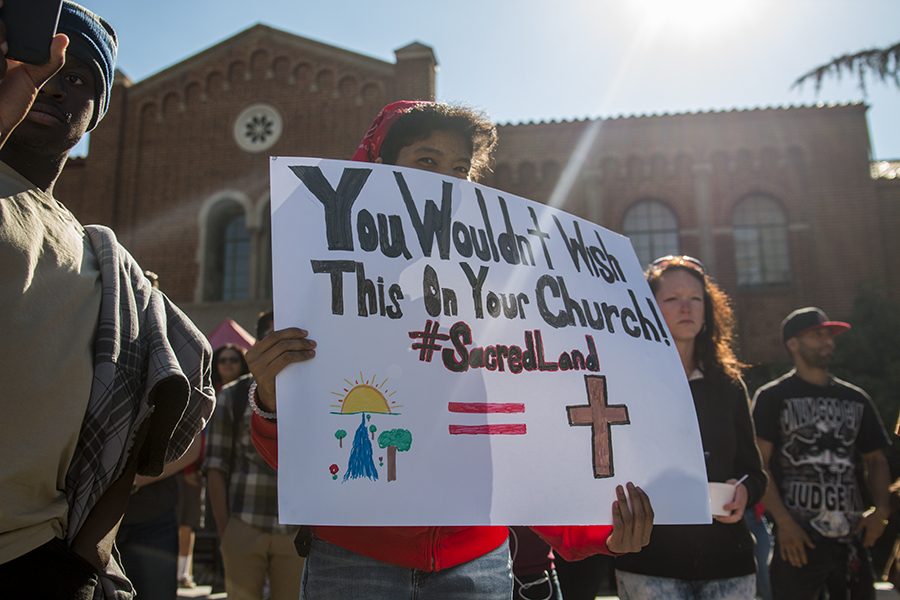#NDPL: Ongoing Movement of Native Americans
March 21, 2017
Photo by: Larry Valenzuela
Protesters gathered at Fresno City College on Nov. 17 to stand in solidarity with those against the North Dakota Access Pipeline.
The last time a group of Native Americans gathered in North America was in 1973 at Pine Ridge Reservation in South Dakota, some 200 members of Oglala Sioux Nation, led by members of the American Indian Movement (AIM), engaged in a standoff with the US government.
The site is infamous for the 1890 massacre of 300 Sioux by the US 7th Cavalry and the massacre at Wounded Knee is known as one of America’s darkest tragedies.
Since the summer of 2016, the Standing Rock Sioux tribe, along with hundreds of other Native American Nations, gathered for one cause known to the world as Dakota Access Pipeline or #NDPL. This is not the first time Native Americans and United States government have been at odds.
According to The Washington Post, “after months of protests, both tribal officials and residents in the town of Cannon Ball, North Dakota, have asked those opposed to completion of the controversial 1,170-mile pipeline to leave. A few hundred activists remain, both on the Standing Rock Sioux reservation and on neighboring land.”
The Dakota Access Pipeline route travels over four American states, including North Dakota, South Dakota, Iowa and Illinois. It has become a focal point of a fight against the pipelines routes.
The pipeline is to be built by Texas-based Energy Transfer Partners and designed to move as many as 570,000 barrels of crude oil daily from North Dakota.
Since first contact between the early Europeans and Indigenous Native Americans, there has been history of war, hardship and broken treaties. Many Native Americans today have a shared history that goes beyond Standing Rock, Wounded Knee, and many other events that took place for nearly five centuries.
Standing Rock is turning into a movement for all Native Americans. The events that took place at Standing Rock are echoing the events that happened centuries ago.
Thousands of Native American are on the march to D.C., many of them coming from all Native Americans Nations. Standing Rock is a new moment for Native American rights. It represents the ongoing struggle in history between the first peoples of the Americas and the United States government.
Throughout America and the world, people everywhere are seeing the resistance of Native Americans far and wide. The Standing Rock movement has given hope to many Native Americans who feel that their voices are not being heard. It is now time to resist and fight for Native Americans rights.
On March 11, five busloads of Standing Rock Sioux Tribe came to Washington, D.C. to stand with their tribal chairman, Dave Archambault II. Other American Indians and allies stood in solidarity with the Standing Rock Sioux Tribe according to Native News Online.Net.
The Standing Rock is the civil rights movement of our time. It is our time to stand and fight like our ancestors before us. Water brings life and Standing Rock is a movement for all. Please stand with Standing Rock. Water is Life!
